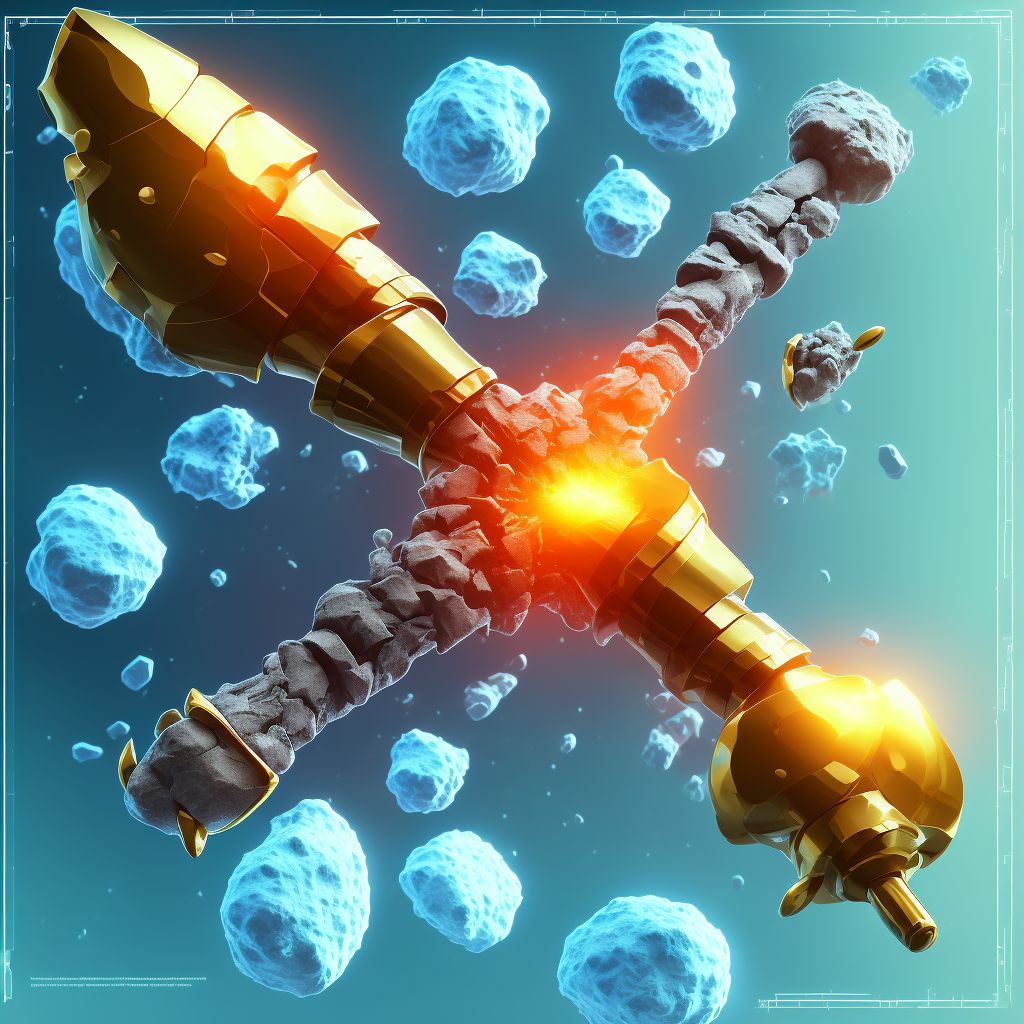
Nondisplaced oblique fracture of shaft of right tibia, subsequent encounter for closed fracture with delayed healing Save
ICD-10 code: S82.234G
Disease category: S82.234: Nondisplaced oblique fracture of shaft of right tibia
Nondisplaced Oblique Fracture of Shaft of Right Tibia: Understanding Subsequent Encounters for Closed Fracture with Delayed Healing
A nondisplaced oblique fracture of the shaft of the right tibia can be a debilitating injury that requires proper care and attention. In some cases, the healing process may be delayed, leading to subsequent encounters for closed fracture treatment. This article aims to provide a basic understanding of this condition and its subsequent encounters, focusing on the causes and possible complications.
When a nondisplaced oblique fracture occurs in the shaft of the right tibia, it means that the bone has cracked but remains in alignment. This type of fracture typically arises due to direct trauma, such as a fall or a sports-related injury. It is important to note that the severity of the fracture can vary, and a healthcare professional should evaluate the extent of the injury.
During the subsequent encounters for closed fracture treatment, physicians primarily focus on monitoring the healing progress and managing any complications that may arise. It is essential to follow the prescribed treatment plan and attend follow-up appointments to ensure proper care and healing.
- Delayed Healing: One of the common complications associated with this type of fracture is delayed healing. This occurs when the fracture takes longer than expected to heal, often due to various factors such as inadequate immobilization, poor blood supply, or infection.
- Nonunion: In some cases, delayed healing can lead to a nonunion, where the fractured bone fails to heal completely. This may require additional treatments, such as bone grafting or surgical intervention, to promote the healing process.
- Malunion: Another possible complication is malunion, which occurs when the fractured bone heals in an incorrect position. This can lead to functional limitations and may require corrective procedures to restore proper alignment.
- Follow-up Care: To prevent delayed healing and its associated complications, it is crucial to adhere to the prescribed treatment plan. This may involve immobilization with a cast or brace, physical therapy, and regular follow-up visits to monitor the healing progress.
In conclusion, a nondisplaced oblique fracture of the shaft of the right tibia can result in subsequent encounters for closed fracture treatment with delayed healing. Understanding the causes and possible complications is vital for ensuring proper care and minimizing the risk of long-term issues. By following the recommended treatment plan and attending follow-up appointments, individuals can increase their chances of a successful recovery.
Treatment of Nondisplaced oblique fracture of shaft of right tibia, subsequent encounter for closed fracture with delayed healing:
Treatment Options for Nondisplaced Oblique Fracture of Shaft of Right Tibia, Subsequent Encounter for Closed Fracture with Delayed Healing
Dealing with a nondisplaced oblique fracture of the shaft of the right tibia can be a challenging experience. However, there are several treatment options available to help patients with closed fractures and delayed healing recover and regain th...
To see full information about treatment please Sign up or Log in